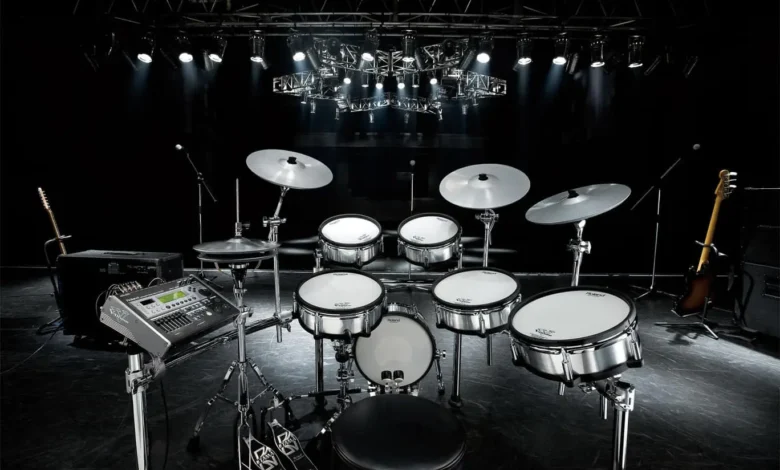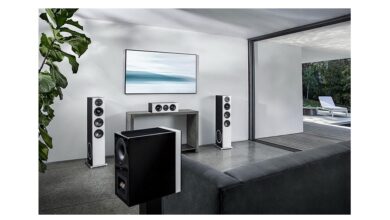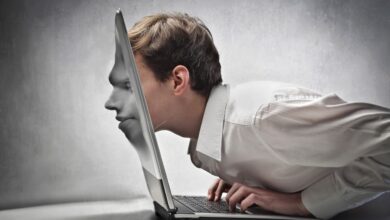Best Electronic Drum Set for Beginners in 2024

Electronic drum set have come a long way since their invention in the 1970s. Unlike acoustic drums that use drumheads and vibrations to produce sound, electronic drums use sensors and triggers to convert drum hits into electronic signals. These signals are then sent to a module that contains digitally recorded drum sounds. When a pad is struck, the module plays back the corresponding drum sound through an amplifier and speakers.
The first commercial electronic drum set was the Simmons SDS-5, released in 1978. Early electronic kits had a very digital and artificial sound compared to acoustic drums. But as technology advanced, the quality of sounds improved dramatically, making electronic drums a viable alternative for practice, live performance, and recording.
Today’s electronic drum set provides an authentic playing experience and a vast library of high-quality drum sounds. Key components include the drum module or “brain”, drum pads and cymbals, kick drum triggers, hi-hat controllers, amplifiers, and speakers. Sensors under the pads and cymbals detect velocity and impact for an extremely responsive playing experience. Advanced modules offer thousands of drum kit samples, multi-effects, and modeling for realistic acoustic drum sounds.
Electronic kits provide many advantages over their acoustic counterparts. They are more affordable, portable, and versatile. The volume can be controlled for practice and playing in different environments. Electronic kits also offer a wide array of sounds that can be easily changed on demand. While lacking the pure acoustic tone of real drums, modern e-kits provide an immersive and expressive playing experience for drummers of all styles and skill levels.
Benefits of Electronic Drums
Electronic drum sets provide many advantages over their acoustic counterparts that make them an appealing option for drummers today. Some key benefits include:
Fully Adjustable and Customizable Sounds
One of the best features of electronic drums is the ability to completely customize the sound. Unlike acoustic drums where you’re limited to the natural tone of the drums and cymbals, electronic kits allow you to tweak the sounds exactly how you want. Most modules have a wide range of preset drum and percussion sounds to choose from. Many also let you adjust parameters like tuning, muffling, ambience, reverb, and more. Some high-end modules even provide sample importing capabilities for limitless sound options. This flexibility lets drummers dial in their perfect drum tones.
Volume Control for Quiet Practice
Acoustic drums are inherently loud, which can be an issue when practicing at home or in apartment buildings. Electronic kits solve this problem by allowing full volume control. Drummers can turn down the volume for quiet practice sessions any time, or use headphones for silent playing. This makes electronic drum sets ideal for practice without disturbing others.
Take Up Less Space Than Acoustic Kits
A full acoustic kit takes up a considerable amount of space that some practice areas or venues may not be able to accommodate. Electronic drum sets have a much smaller footprint, with compact drum pads and modules instead of large drum shells. This allows drummers to fit their kits into tighter spaces and makes them highly portable.
Recording Capabilities
Unlike acoustic kits, electronic drums can be plugged directly into a computer or audio interface using MIDI or USB connections. This makes recording drums extremely simple, without the need for microphones or significant audio engineering. Drummers can quickly lay down drum tracks and build full productions with electronic kits. The editable sounds also give greater mixing flexibility compared to recorded acoustic drums.
Key Features to Look for When Buying
When shopping for an electronic drum set, there are several key features to consider that can dramatically impact the playing experience, sound quality, and versatility of the kit:
Number of Drum Pads/Zones
-
The number of drum pads or rubber pads that are mounted to the drum rack is important. Entry-level e-kits often have 4-5 pads, while higher-end sets have 8-10 pads or more. This allows you to have a full acoustic-style drum kit layout.
-
The number of zones on the rubber drum pads matters too. More zones allow the pads to sense dynamics and create more expressive, realistic sounds when playing. 2-3 zones per pad is common on budget sets, while 5+ zones per pad is ideal.
Sound Module/Brain Quality
-
The sound module, sometimes called the drum brain, is the hardware box that contains the sounds, effects, and controls for an e-kit. The quality of the sounds and responsiveness relies heavily on the module.
-
Look for kits with modules that offer a large library of drum and percussion sounds you can layer and customize. More memory and polyphony allow for better sound quality.
Hi-Hat Controllers
-
A hi-hat controller allows you to recreate the open-closed action of acoustic hi-hats. Pedal-controlled options are more realistic than simple buttons.
-
Look for continuous control pedals and preferably multiple hi-hat sounds/positions for more realistic playing.
Drum Module Expandability
-
Many modules allow you to add additional pads and triggers down the line. This expandability allows you to customize and grow your kit over time.
-
Features like additional trigger inputs, MIDI or USB connectivity, and memory card slots for new sounds make a module more expandable.
Brands and Pricing
-
Leading e-kit brands like Roland, Yamaha, Alesis and others have options at different price points. In general, $500-$800 offers a decent starter kit, while $1000+ provides a more realistic playing experience.
-
Try out kits in person at music stores if possible. Research product reviews as well before investing, as quality can vary significantly.
Sound Module and Brain Options
The sound module, also called the drum brain, is the heart of an electronic drum set. This module takes the trigger signals from the pads and converts them into drum and percussion sounds. Here are some key features to look for in a drum brain:
Pre-loaded Sounds and Customization
Most modules come pre-loaded with drum kits, percussion sounds, and other instruments. Entry-level brains may have 100-200 sounds while pro-level modules can have 1000+ sounds. Look for a module with the genres and styles you want to play. Top modules allow you to customize the presets and create your own kits. Some modules let you load additional sounds via USB.
Mixing Capabilities
A good brain enables you to craft the perfect drum sound for each pad. Look for controls to tune, muffle, dampen, and equalize each drum. High-end modules provide advanced mixing tools like compression and reverb per drum. This allows you to dial in your personalized drum set.
Connectivity
Standard connections on sound modules include USB, MIDI I/O, aux input, and headphone jack. USB allows you to connect to a computer and use the module as an interface and controller. MIDI lets you connect to synths, sequencers, and other MIDI gear. The aux input enables you to play along with music. A headphone jack is essential for silent practice.
Display Screens
Higher-end drum brains have LCD or LED screens to view settings, parameters, and menus. This makes it easy to program, mix, and customize your drum kits on the fly. Look for a high-resolution screen if this is important to you.
With the right drum brain, you can craft professional quality drum sounds for live playing or in the recording studio. Pay attention to the sounds, mixing, connectivity, and display to find the best brain for your needs and budget.
Drum Pads and Triggers
One of the most important parts of an electronic drum set are the drum pads and triggers. These are what you actually hit to produce the drum sounds. There are a few key factors to consider when looking at drum pads:
Rubber vs Mesh Heads
-
Rubber pads – These are made of durable rubber and provide a realistic bounce and response. They are very durable but can be noisy.
-
Mesh heads – Mesh drum heads feel more like an acoustic drum. They are quieter and allow you to play with brushes. Mesh heads are more realistic but can be less durable than rubber.
Size of Pads
- Pad size affects playability and sound. Larger pads like 8” and 10” feel more like real drums. Smaller pads like 6” or 7” may be better for tight spaces.
Number of Zones
- Zones divide the pad into sections that can produce different sounds. More zones allow more nuance, like separate sounds for rim shots. 2 and 3 zone pads are common.
Sensitivity Adjustment
- You can adjust pad sensitivity on most modules. Higher sensitivity requires less playing force. Adjust this to suit your style.
Popular Brands
- Roland, Alesis, Yamaha, and Simmons make quality drum pads. Roland is known for very natural, responsive pads with mesh heads. Alesis and Yamaha offer affordable quality.
Cymbals
One of the key differences between acoustic and electronic drum kits are the cymbals. Acoustic cymbals come in many varieties, but electronic cymbals are more limited in options. However, electronic cymbals provide some unique features not possible with acoustic cymbals.
The most basic electronic cymbals are single-zone, meaning they produce the same sound no matter where you strike them. More advanced cymbals offer dual or triple-zone triggering, allowing for different sounds depending on where the cymbal is struck. This helps emulate the feel of real cymbals.
Some electronic cymbals are chokeable, meaning you can grab or squeeze them to mute or “choke” the sound, just like an acoustic cymbal. Non-chokeable cymbals lack this ability to choke, which can make them less realistic.
For hi-hats, electronic kits use hi-hat controllers rather than two separate cymbals. The hi-hat controller senses when the hi-hat is open, closed, or partially closed to trigger appropriate sounds. Acoustic hi-hats allow more nuance in foot control and sound variation.
Popular brands for electronic cymbals include Roland, Yamaha, Alesis, and Simmons. Roland and Yamaha are known for excellent realistic responses, while Alesis and Simmons offer more affordable options. Choosing cymbals from the same brand as your drum module often provides the most seamless experience.
Overall, electronic cymbals provide convenience and options not possible acoustically. However, acoustic cymbals still offer more authenticity in their playing response and sound. Electronic cymbals continue to get closer to the real thing each year.
Popular Electronic Drum Brands
Electronic drums have been around since the 1970s, and several brands have established themselves as leaders in manufacturing and innovation. Here are some of the most popular electronic drum brands to consider:
Roland
Roland is one of the pioneers of electronic drum kits and has been at the forefront of electronic percussion since the early 1980s. They are known for their high-quality sounds, advanced triggering technology, and user-friendly modules. Some of Roland’s most popular electronic drum kit lines include the TD-17, TD-25, and TD-50.
Yamaha
Yamaha entered the electronic drum market later than Roland but has quickly become a top brand for e-drums. They are known for the natural and realistic sounds in their modules as well as the comfortable playing feel of their drum pads. Popular Yamaha electronic drum kit series include the DTX400, DTX450, and DTX700.
Alesis
Alesis offers electronic drum kits that appeal to beginner and intermediate players, with affordable prices but not sacrificing quality. Their kits provide a great introduction for those new to electronic drums. Well-known Alesis electronic drum set include the Nitro, Forge, and Surge.
Simmons
Simmons specializes in higher-end electronic drum kits meant for professional and experienced drummers. Their kits are known for excellent triggering, natural feel, and high sound quality. Simmons is especially recognized for their mesh head pads. Top products include the SD500 and DA200S.
In summary, Roland and Yamaha tend to dominate the mid to high-end electronic drum market, while Alesis targets more budget-conscious buyers. Simmons focuses on pro-level e-drums. Each brand has strengths in different areas like sound quality, playing response, and features.
Acoustic vs Electronic Kits
Acoustic and electronic drum kits each have their own unique advantages and disadvantages when it comes to sound quality, feel, cost, and recording/volume control.
Sound Quality
The sound of acoustic drums comes from the vibration of the drum skins and shells. This creates a natural, organic sound that is difficult to perfectly recreate electronically. Electronic drums use sampled acoustic sounds that can sound close to the real thing, but may lack some of the subtle overtones, resonance and expression of acoustic drums. However, electronic kits offer a much wider range of drum and percussion sounds that can be tailored to any musical genre.
Feel/Rebound
Acoustic drums have a very responsive and dynamic feel thanks to the natural rebound of the drumheads. Electronic drum pads and cymbals have improved dramatically but still cannot completely match the nuanced feel of acoustic kits. The rebound depends on the pad/cymbal type – rubber pads feel bouncier than mesh heads, for example. Electronic kits require a bit of adjustment from acoustic drummers.
Cost Comparison
Acoustic drum kits are more expensive, with professional kits starting around $1000 and going up significantly. Electronic kits start around $500 and go up to around $3000 for high-end sets. The main cost for acoustic kits is the shells and cymbals, while electronics have the sound module, pads/triggers, and stands. Overall, electronic kits are more affordable.
Recording and Volume Control
A major advantage of electronic kits is their built-in recording and volume control functionality. Acoustic kits need to be mic’d up properly, while electronics can plug directly into a PA system, audio interface, or headphones. Electronic Drum Set can be played silently with headphones, which is difficult with acoustic kits. The volume and sounds can be easily adjusted on electronics as well. However, some drummers still prefer the natural acoustic sound for recording.
Examples of Electronic Kits for Different Uses
Electronic drum set come in a wide range of prices and features to suit drummers at different experience levels and budgets. Here are some examples to consider:
Beginner Sets Under $500
-
Alesis Nitro Mesh Kit – Around $400, this is one of the most popular affordable electronic kit options. It comes with an 8″ dual-zone snare drum and three 8” mesh toms. The cymbals are 12” dual-zone ride and 10” crash with choke function. Easy module and setup for beginners.
-
Roland TD-1DMK – Right around $500, Roland is known for high-quality sounds. This is a compact five-piece kit good for apartment drumming. Has mesh heads, coach functions, and 15 different drum kits.
-
Yamaha DTX400K – Yamaha is another top brand in electronics. The DTX400K has 10″ silicone rubber drum pads and three cymbals. Over 400 drum and percussion voices are included for under $500.
Intermediate Kits for Gigging
-
Roland TD-17KV – Moving up to around $1200, the TD-17 has an improved module over entry kits with drum, cymbal, and percussion sounds modeled after acoustic drums. Has mesh-head toms and snare with better dynamic response for live playing.
-
Alesis Strike Pro SE – Closer to $1500, this Alesis kit features their largest drum pads yet at 12” along with 14” hi-hats. The sounds are pro-level and it has a good mix of cables and wireless connectivity.
-
Yamaha DTX562K – Yamaha’s high-end intermediate electronic kit has textured silicon drum heads and three cymbal pads. The module has over 700 drum and percussion voices. Ideal for gigs.
High-End Pro Kits
-
Roland TD-50KV – This flagship Roland V-Drums kit is over $6000. It has their most advanced module, mesh heads, and digital snare/ride for an ultra-realistic feel and sound. Designed for touring pros and studio drummers.
-
Yamaha DTX760K – Yamaha’s high-end offering includes a textured silicone snare head and a three-zone ride cymbal. The module provides a massive 1367 different drum and percussion sounds. Over $7000.
-
Alesis Strike Pro – The Alesis Strike Pro features large 14” drum pads with natural response, plus an extra 8” pad. It delivers premium sounds with 60GB of samples. An elite electronic kit at around $3800.
The Future of Electronic Drums
Electronic drums are poised to continue advancing and improving in the years ahead. Here are some key areas to watch in terms of future developments:
New Technology
Several emerging technologies are likely to shape the future of electronic drums. Improved sensor and trigger technology will enable even more natural and nuanced playing dynamics. Expect to see innovations in the module/brain like more realistic and responsive sounds, built-in sequencing and composition tools, and wireless connectivity options. The pads and cymbals themselves will also evolve, with new materials and sensitivity while remaining durable.
Increased Accessibility and Affordability
As technology advances and production scales up, electronic drum prices are expected to become more affordable and accessible to a wider range of drummers. While high-end kits will always require a significant investment, mid-range and even budget-friendly options will provide great playability and sound. This will help make electronic kits a viable option for more drummers.
Hybrid Acoustic/Electronic Kits
Hybrid drum kits combining acoustic drums and cymbals with electronic triggers and sounds are gaining popularity. This allows drummers to get the natural feel of acoustic drums but with the technology and options of an e-kit. As triggering technology improves, hybrid setups will become more seamless and affordable. Expect to see more drummers opting for these hybrid configurations to get the best of both worlds.
In summary, from advanced sensors to hybrid kits, electronic drums are poised to become even more powerful, responsive and affordable. The technology will continue advancing to provide drummers with more expressive, customizable and authentic playing experiences.





